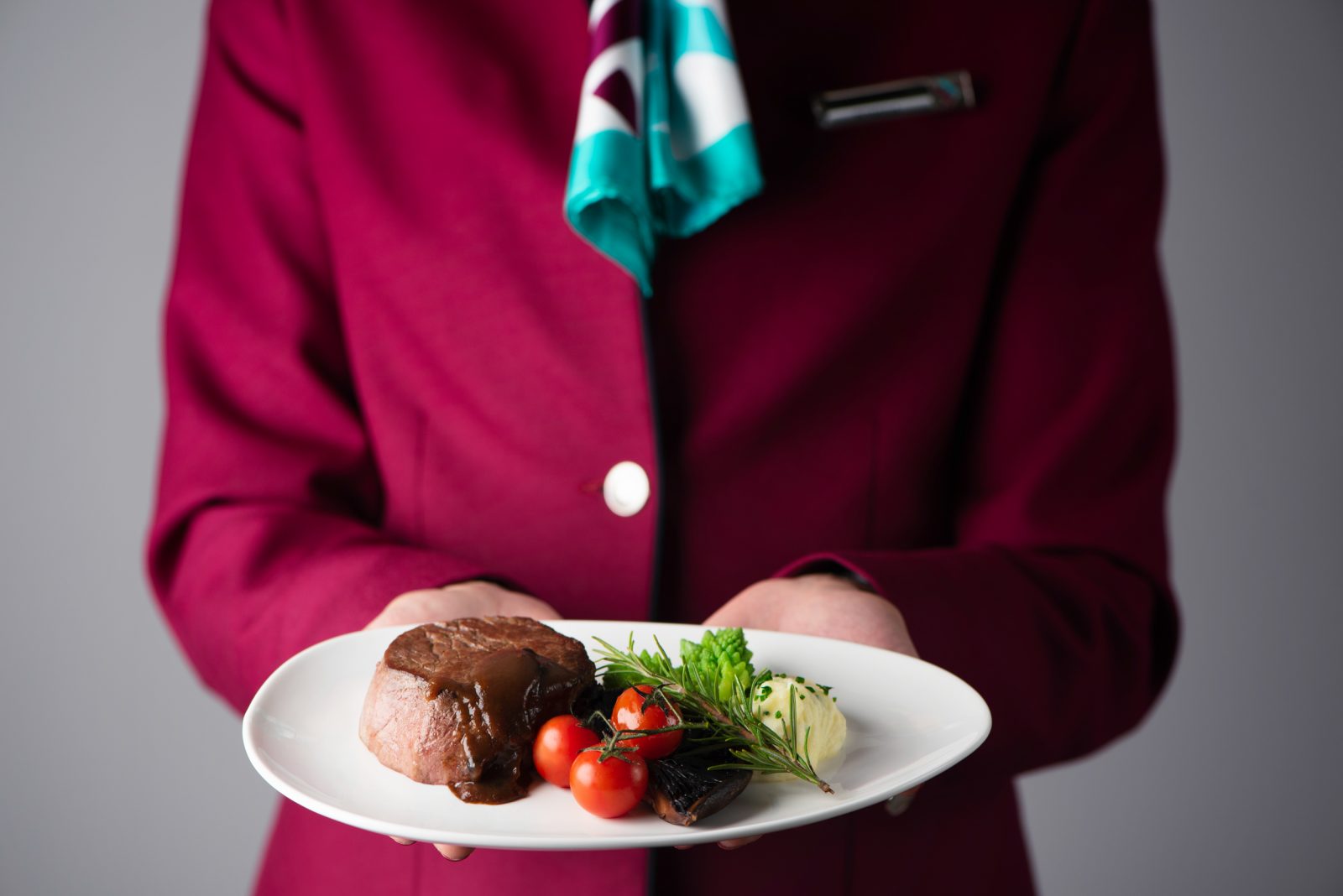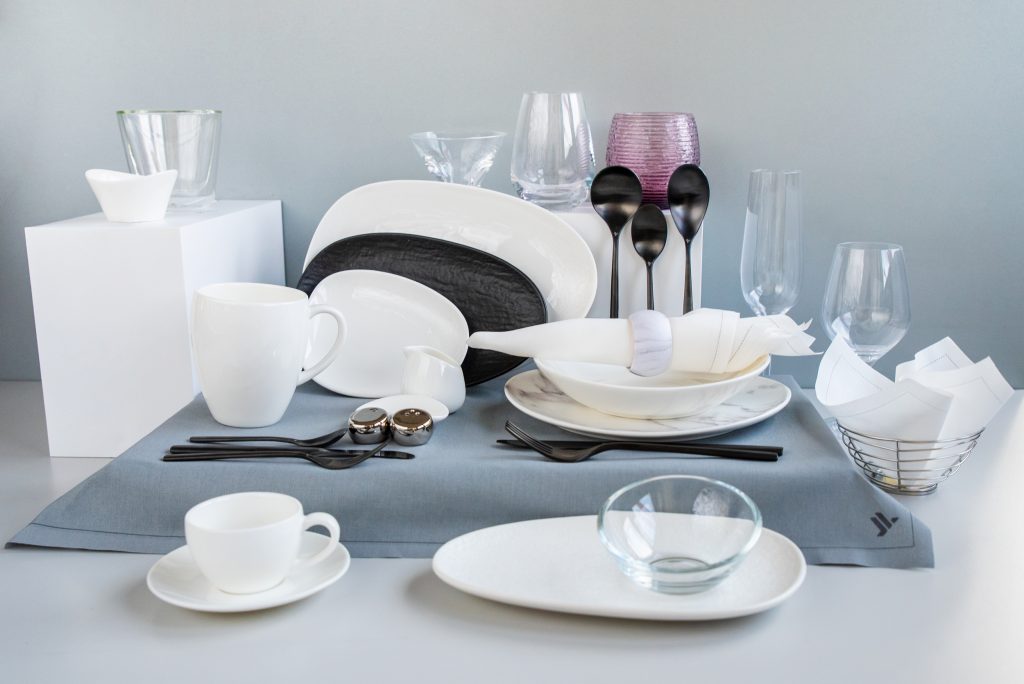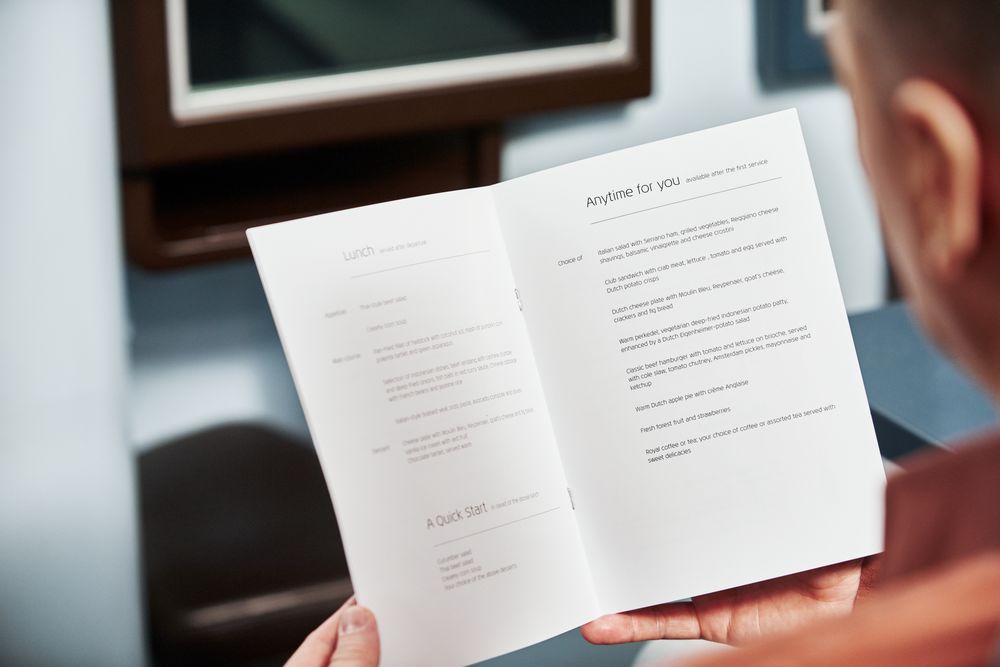
Air Italy has today unveiled a new dining concept for Business Class passengers, featuring brand new tableware, cutlery and chinaware as well as a ‘Dine On Demand’ menu. It’s a bold move to offer Dine On Demand and it will not only set the rapidly expanding airline apart from many of its competitors but also bring it in line with the service standards offered by major equity partner, Qatar Airways.
This is how Air Italy describes the service: “With the new dine-on-demand service, passengers can choose from the extensive à la carte menu, and create and enjoy at any time and in any order their very own dining experience.”
This is a really interesting move that further blurs the line between what we know to be Business Class and First Class. A restaurant-style Dine On Demand service has traditionally been reserved solely for First Class passengers – not only to differentiate the service but also because it’s such an expensive and labour intensive service to offer.

First off, if an airline is going do a good job of offering Dine On Demand then it has to load excess food – after all, there’s no point in promising to offer the service if you then consistently disappoint passengers because their first or even second choice is out of stock if they choose to eat later on in the flight.
Then there’s the level of staffing it takes to deliver this kind of service – During the first few hours of a flight that’s relatively easy to manage but what about in the middle of a long-haul flight when cabin crew have to take a break in order to remain legal? A reduced number of crew is okay in First Class with just a few passengers to serve but Business Class cabins can easily stretch to 50+.
So, straight away you have two big potential problems with offering Dine On Demand in Business Class – (1) Passengers either might not get the choice they want or an airline cuts into its razor-thin margins by loading (and wasting) more food, and (2) passengers might end up waiting an age to be served because of reduced crew levels or airlines cut into their razor-thin margins (again) to have more cabin crew onboard.
It’s not like other airlines haven’t tried Done On Demand in Business Class and worked this out for themselves. Cathay Pacific tried and then quickly dumped a full Dine On Demand concept in 2017 after trailing the service for just two months – the trial was meant to run for at least six months.
Cabin crew found the service unworkable and the level of service they offered passengers actually fell as their workload increased. Cathay Pacific wanted to improve its current service which has been likened to an assembly line but instead, the service level dropped.

That’s not to say that Cathay Pacific is completely abandoning Dine On Demand – the expectations of passengers are getting higher, especially as the hard product in Business Class evolves to such an extent that it’s reaching the same standard as what you’d have experienced in First Class just a few years ago.
Instead, Cathay is experimenting with offering a small number of smaller hot and cold dishes that can be served ‘restaurant style’ in between the main meal services. Dutch airline, KLM offers a similar concept that its dubbed ‘Anytime for You’ on a limited number of routes.
Airlines know the competitive landscape in Business Class is heating up – passengers quite rightly expect ever greater things and the service they receive during meal times is a massive part of the whole experience. But Air Italy is really bucking the trend here – rivals are cutting crew numbers and adjusting the service routine to account of this.
Take United Airlines for example – they’ve recently decided to start pre-plating main courses in casserole dishes. That way, they can cut a flight attendant who used to do the time-consuming job of plating-up Business Class meals in the galley. It’s not like United is alone – a number of premium airlines do exactly the same.
It will be really interesting to see how Air Italy gets on with this service routine. It’s not that it can’t work but getting it right is really difficult and potentially expensive.
The line between First and Business Class may well be more blurred than ever before but expect Dine On Demand in Business Class to be the exception, not the rule.
Related
Mateusz Maszczynski honed his skills as an international flight attendant at the most prominent airline in the Middle East and has been flying ever since... most recently for a well known European airline. Matt is passionate about the aviation industry and has become an expert in passenger experience and human-centric stories. Always keeping an ear close to the ground, Matt's industry insights, analysis and news coverage is frequently relied upon by some of the biggest names in journalism.







